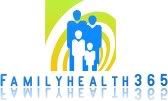
Treatment for high blood pressure in African-Americans needs to start sooner and be more aggressive, according to a consensus statement by the International Society on Hypertension in Blacks (ISHIB) that is published in Hypertension: Journal of the American Heart Association.
"Evidence from several recently completed studies converged to convince our committee that we were waiting a little bit too long to start treating hypertension in African-Americans," said lead author John M. Flack, MD, of the Department of Internal Medicine at Wayne State University in Detroit, MI, in an online report of the study.
The update to the ISHIB's 2003 consensus statement—for which Flack and colleagues reviewed hypertension and cardiovascular disease prevention and treatment guidelines, pharmacological hypertension clinical end point trials, and blood pressure-lowering trials in African-Americans—includes two major recommendations:
* The thresholds at which treatment is initiated in African-American patients should be lowered.
* Physicians should move quickly from single-drug therapy to multi-drug therapy to keep a patient's blood pressure comfortably below the thresholds
"We believe that these recommendations will lead to better blood pressure control, and a better outlook for African-Americans with high blood pressure," Flack said.
Currently, blood pressure below 120/80 is considered normal for healthy adults. However, the ISHIB is proposing that physicians recommend lifestyle changes to lower blood pressure in otherwise healthy African-Americans with blood pressure at or above 115/75. Those changes include reduced dietary sodium and increased potassium from eating more fruits and vegetables, as well as losing weight, getting regular aerobic exercise, and consuming alcohol in moderation, Flack said.
"Epidemiological data shows that 115/75 is the critical blood pressure number for adults, and every time that figure goes up by 20/10 the risk of cardiovascular disease essentially doubles. We think it makes perfect sense to start lifestyle changes at that lower threshold," he said, pointing out that from age 50 and up, Americans have a 90% chance of developing hypertension.
The ISHIB also recommends that physicians tighten the primary prevention threshold to 135/80 for African-Americans, and begin secondary prevention when blood pressure is at or above 130/80, according to the statement, which provides step-by-step guidance on the best second, third, and fourth drugs to add based on individual patient characteristics, along with charts with alternate multi-drug combinations so physicians have several options for keeping patients' blood pressure under targets.
hcplive.com











































